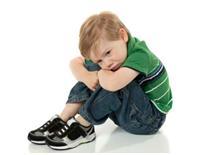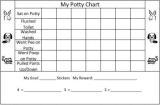Potty Training Accidents, Regression, and Problems

Learn the best tips and ideas for potty training accidents that increase your child's ability to control his /her bladder and bowels. All children will have accidents when first getting toilet trained, so it's important to first recognize that this is an essential part of the learning process.
It is important to never scold or assume that your child is having accidents on purpose or else you could ultimately end up having potty training regression or resistance to the entire experience.
After you have already gone through training your child, he/she may still have some mishaps for up to one year. This is completely normal, unless they occur more than 2-3 times per week. If they are becoming this frequent, you may need to go back and respond to them as recommended on day one until they decrease in frequency.
The following provides guidelines for how to respond to accidents on each day of the recommended potty training in three days and the best way to respond to accidents after your child has already become trained.
Day One - Training
If your child has accidents on the first day of training:
• Do not scold or this could cause potty training resistance.
• Say "Uh Oh! It looks like (child's name) needs to practice going potty!"
• Go to different parts of the house, then run to the toilet, pull down pants and have child sit on the toilet. Do this 5-10 times.
• After 2-3 rounds of doing this, if your child becomes aggressive or angry about practicing going to the bathroom, reduce to sitting on the toilet only one time. Then, after accidents say in a non-scolding neutral tone of voice, "Poop and pee go in the potty."
Day Two - Maintenance Phase to prevent potty training accidents
If your child has a potty training accident on day two the maintenance phase:
• Continue not to scold or this could cause regression.
• Say “Uh Oh! It looks like (child's name) needs to practice going potty!”
• Go to different parts of the house, then run to the toilet, pull down pants and have child sit on the toilet. Do this 2 times.
• Once again, if your child previously became aggressive or angry about practicing going to the bathroom after accidents on day one, reduce to sitting on the toilet only one time. Then, say in a non-scolding neutral tone of voice, "Poop and pee go in the potty."
Day Three – Potty Training Accidents in Public
On day three it is recommended to follow the guidelines for training your child in public restrooms first, then if he/she has accidents while in public:
• Continue not to scold or this could cause regression.
• Say "Uh Oh! It looks like (child's name) needs to practice going potty!"
• Go to the toilet, pull down pants and have child sit on the toilet, then change his/her clothes.
• Go back to where he/she had the accident and practice going one more time sitting briefly while saying in a non-scolding neutral tone of voice, "When you have to go you have to hurry to the bathroom."
Future Potty Training Accidents
Once you have already trained your child and worked with him/her using the necessary tools, he/she may still have some potty training accidents. When this happens, simply change your child, remind him/her that "Poop and pee go in the toilet." and move on.
Occasional accidents are normal, but if they increase too much in frequency, then you may need to go back to doing 4-5 practice runs after each occurrence and limiting access to toys stating in a neutral tone to the child, "Uh oh, you must have too many distractions. When you start going on the toilet again, you can have some of your toys back."
Remember to avoid any negative comments or annoyed nonverbal expressions, such as loud sighs and rolling your eyes after training accidents. Children can be very sensitive to this, which could lead to regression.
Toileting behavior can take time for any child as they are learning the importance of stopping what they are doing to go as soon as they feel the need. So just be patient and anticipate that accidents can still happen by always bringing a change of clothes.
Additional Recommended Pages:
